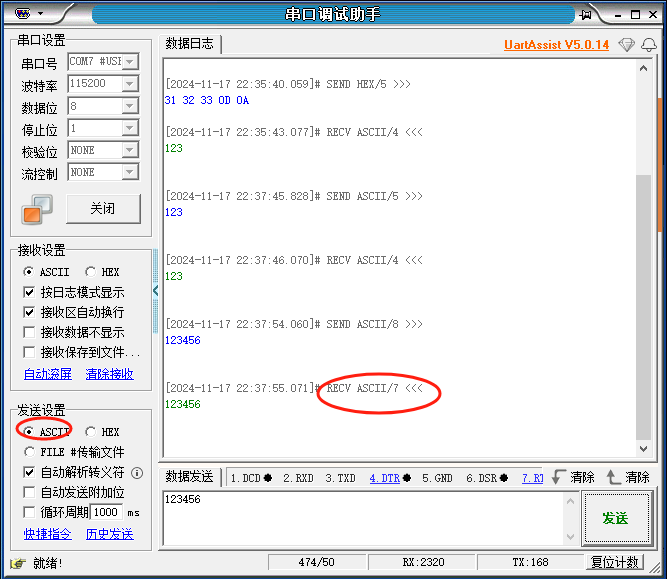引言
在开发 Spring Boot 应用程序时,我们经常需要在应用程序启动后执行一些初始化任务,比如加载初始数据、连接外部服务、执行健康检查等。Spring Boot 提供了 CommandLineRunner 接口,使得这些任务的实现变得非常简单和直观。本文将深入探讨 CommandLineRunner 的原理,并通过多个示例详细介绍如何在实际项目中使用它。
什么是 CommandLineRunner?
CommandLineRunner 是 Spring Boot 提供的一个接口,用于在应用程序启动完成后执行一些初始化操作。通过实现 CommandLineRunner 接口,你可以在应用程序启动后的某个时间点自动执行一段代码。这在需要进行数据库初始化、数据加载、日志记录等场景中非常有用。
接口定义
CommandLineRunner 接口只有一个方法:
public interface CommandLineRunner {void run(String... args) throws Exception;
}run方法:该方法在应用程序启动后被调用。String... args:命令行参数数组。throws Exception:允许抛出任何异常。
生命周期
CommandLineRunner 的 run 方法在以下阶段被调用:
- Spring Boot 应用程序启动:当
SpringApplication.run()方法被调用时,Spring Boot 开始启动应用程序。 - Spring 容器初始化:Spring 容器(通常是
ApplicationContext)被初始化,所有的 Bean 都被创建并注入依赖。 CommandLineRunner调用:Spring Boot 会查找所有实现了CommandLineRunner接口的 Bean,并按顺序调用它们的run方法。- 应用程序就绪:所有
CommandLineRunner的run方法执行完毕后,应用程序进入就绪状态。
如何使用 CommandLineRunner
基本用法
步骤 1:创建 Spring Boot 应用程序
首先,确保你已经创建了一个基本的 Spring Boot 应用程序。如果你还没有创建,可以使用 Spring Initializr 快速生成。
步骤 2:创建实现 CommandLineRunner 接口的类
import org.springframework.boot.CommandLineRunner;
import org.springframework.stereotype.Component;@Component
public class MyCommandLineRunner implements CommandLineRunner {@Overridepublic void run(String... args) throws Exception {// 检查是否有命令行参数传递if (args.length > 0) {// 调用第一个方法并传递参数methodOne(args[0]);// 调用第二个方法并传递参数methodTwo(args[1]);} else {System.out.println("No command line arguments provided.");}}private void methodOne(String param) {System.out.println("Method One with param: " + param);}private void methodTwo(String param) {System.out.println("Method Two with param: " + param);}
}步骤 3:创建主类
确保你的主类中有一个 main 方法来启动 Spring Boot 应用程序。
import org.springframework.boot.SpringApplication;
import org.springframework.boot.autoconfigure.SpringBootApplication;@SpringBootApplication
public class MyApp {public static void main(String[] args) {SpringApplication.run(MyApp.class, args);}
}步骤 4:运行应用程序
你可以通过命令行传递参数来运行应用程序。例如:
java -jar myapp.jar arg1 arg2示例 1:数据库初始化
假设我们需要在应用程序启动时初始化数据库表并插入一些初始数据。
创建数据库初始化类
import org.springframework.beans.factory.annotation.Autowired;
import org.springframework.boot.CommandLineRunner;
import org.springframework.jdbc.core.JdbcTemplate;
import org.springframework.stereotype.Component;@Component
public class DatabaseInitializer implements CommandLineRunner {@Autowiredprivate JdbcTemplate jdbcTemplate;@Overridepublic void run(String... args) throws Exception {// 创建表jdbcTemplate.execute("CREATE TABLE IF NOT EXISTS users (id INT AUTO_INCREMENT PRIMARY KEY, name VARCHAR(255))");// 插入初始数据jdbcTemplate.update("INSERT INTO users (name) VALUES (?)", "Alice");jdbcTemplate.update("INSERT INTO users (name) VALUES (?)", "Bob");System.out.println("Database initialized successfully.");}
}示例 2:外部服务连接
假设我们需要在应用程序启动时连接到一个外部服务,并验证连接是否成功。
创建外部服务连接类
import org.springframework.beans.factory.annotation.Value;
import org.springframework.boot.CommandLineRunner;
import org.springframework.stereotype.Component;@Component
public class ExternalServiceConnector implements CommandLineRunner {@Value("${external.service.url}")private String serviceUrl;@Overridepublic void run(String... args) throws Exception {// 模拟连接外部服务System.out.println("Connecting to external service at: " + serviceUrl);// 模拟连接成功System.out.println("Connection successful.");}
}示例 3:健康检查
假设我们需要在应用程序启动时执行一系列健康检查,确保所有依赖服务都可用。
创建健康检查类
import org.springframework.beans.factory.annotation.Autowired;
import org.springframework.boot.CommandLineRunner;
import org.springframework.stereotype.Component;@Component
public class HealthChecker implements CommandLineRunner {@Autowiredprivate DatabaseHealthCheck databaseHealthCheck;@Autowiredprivate ExternalServiceHealthCheck externalServiceHealthCheck;@Overridepublic void run(String... args) throws Exception {// 检查数据库健康状况if (!databaseHealthCheck.check()) {throw new RuntimeException("Database health check failed.");}// 检查外部服务健康状况if (!externalServiceHealthCheck.check()) {throw new RuntimeException("External service health check failed.");}System.out.println("All health checks passed successfully.");}
}示例 4:多任务执行
假设我们需要在应用程序启动时执行多个任务,并且这些任务需要按特定顺序执行。
创建多个 CommandLineRunner 类
import org.springframework.boot.CommandLineRunner;
import org.springframework.core.annotation.Order;
import org.springframework.stereotype.Component;@Component
@Order(1)
public class FirstTask implements CommandLineRunner {@Overridepublic void run(String... args) throws Exception {System.out.println("Executing the first task.");}
}@Component
@Order(2)
public class SecondTask implements CommandLineRunner {@Overridepublic void run(String... args) throws Exception {System.out.println("Executing the second task.");}
}控制执行顺序
CommandLineRunner 的执行顺序可以通过实现 Ordered 接口或使用 @Order 注解来控制。
使用 @Order 注解
import org.springframework.boot.CommandLineRunner;
import org.springframework.core.annotation.Order;
import org.springframework.stereotype.Component;@Component
@Order(1)
public class FirstTask implements CommandLineRunner {@Overridepublic void run(String... args) throws Exception {System.out.println("Executing the first task.");}
}@Component
@Order(2)
public class SecondTask implements CommandLineRunner {@Overridepublic void run(String... args) throws Exception {System.out.println("Executing the second task.");}
}使用 Ordered 接口
import org.springframework.boot.CommandLineRunner;
import org.springframework.core.Ordered;
import org.springframework.stereotype.Component;@Component
public class FirstTask implements CommandLineRunner, Ordered {@Overridepublic void run(String... args) throws Exception {System.out.println("Executing the first task.");}@Overridepublic int getOrder() {return 1;}
}@Component
public class SecondTask implements CommandLineRunner, Ordered {@Overridepublic void run(String... args) throws Exception {System.out.println("Executing the second task.");}@Overridepublic int getOrder() {return 2;}
}异常处理
在 run 方法中,你可以抛出任何异常。建议添加适当的异常处理逻辑,以防止应用程序因未处理的异常而意外终止。
示例
import org.springframework.boot.CommandLineRunner;
import org.springframework.stereotype.Component;@Component
public class MyCommandLineRunner implements CommandLineRunner {@Overridepublic void run(String... args) throws Exception {try {// 执行初始化任务initializeData();} catch (Exception e) {// 记录异常并停止应用程序启动System.err.println("Initialization failed: " + e.getMessage());System.exit(1);}}private void initializeData() {// 模拟初始化任务System.out.println("Initializing data...");// 模拟异常throw new RuntimeException("Initialization failed.");}
}依赖注入
你可以在实现 CommandLineRunner 的类中注入其他 Spring 管理的 Bean,以便在 run 方法中使用它们。
示例
import org.springframework.beans.factory.annotation.Autowired;
import org.springframework.boot.CommandLineRunner;
import org.springframework.stereotype.Component;@Component
public class MyCommandLineRunner implements CommandLineRunner {@Autowiredprivate MyService myService;@Overridepublic void run(String... args) throws Exception {// 调用服务方法myService.doSomething();}
}@Component
public class MyService {public void doSomething() {System.out.println("Doing something...");}
}命令行参数
CommandLineRunner 的 run 方法接收一个 String... args 参数数组,这些参数是从命令行传递的。你可以在 run 方法中处理这些参数。
示例
import org.springframework.boot.CommandLineRunner;
import org.springframework.stereotype.Component;@Component
public class MyCommandLineRunner implements CommandLineRunner {@Overridepublic void run(String... args) throws Exception {if (args.length > 0) {for (String arg : args) {System.out.println("Received argument: " + arg);}} else {System.out.println("No command line arguments provided.");}}
}多个 CommandLineRunner 执行顺序
如果应用程序中有多个实现了 CommandLineRunner 接口的类,Spring Boot 会按顺序调用它们的 run 方法。你可以通过实现 Ordered 接口或使用 @Order 注解来控制这些类的执行顺序。
示例
import org.springframework.boot.CommandLineRunner;
import org.springframework.core.annotation.Order;
import org.springframework.stereotype.Component;@Component
@Order(1)
public class FirstTask implements CommandLineRunner {@Overridepublic void run(String... args) throws Exception {System.out.println("Executing the first task.");}
}@Component
@Order(2)
public class SecondTask implements CommandLineRunner {@Overridepublic void run(String... args) throws Exception {System.out.println("Executing the second task.");}
}其他注意事项
- 异常处理:在
run方法中,你应该添加适当的异常处理逻辑,以防止应用程序因未处理的异常而意外终止。 - 依赖注入:你可以在实现
CommandLineRunner的类中注入其他 Spring 管理的 Bean,以便在run方法中使用它们。 - 命令行参数:确保传递的命令行参数格式正确,避免因参数错误导致应用程序启动失败。
总结
CommandLineRunner 是 Spring Boot 提供的一个非常有用的接口,可以帮助你在应用程序启动后执行初始化任务。通过实现 run 方法,你可以轻松地执行各种初始化操作,并且可以通过命令行参数传递必要的配置信息。本文通过多个示例详细介绍了如何在实际项目中使用 CommandLineRunner,希望对你有所帮助。



















